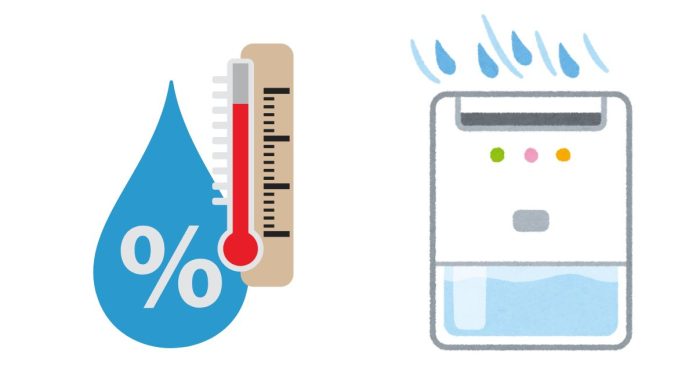Lowering humidity in your house is important for comfort and to prevent mold growth, musty odors, and damage to furniture or walls. Here are some effective strategies to reduce humidity in your home, based on common recommendations from r/HomeMaintenance and other expert sources:
1. Use a Dehumidifier
- What It Does: A dehumidifier removes excess moisture from the air, helping to maintain a comfortable humidity level (ideally between 30% and 50%).
- Where to Place It: In areas with high humidity, such as basements, bathrooms, or kitchens.
- Tips: Empty the water tank regularly, and clean the filters to ensure it works efficiently.
2. Improve Ventilation
- Exhaust Fans: Use exhaust fans in high-humidity areas like the bathroom, kitchen, and laundry room. Make sure they vent air outside, not into the attic.
- Windows and Doors: Open windows during dry days to allow air circulation. If it’s particularly humid outside, keep them closed to prevent bringing in moisture.
- Ceiling Fans: Run ceiling fans to increase air circulation throughout the house, which can help moisture evaporate and keep air moving.
3. Use Air Conditioners
- What It Does: Air conditioners not only cool the air but also remove moisture from it as it passes over the evaporator coils.
- Where to Use: Run the AC regularly, especially during the warmer months, to maintain comfort and reduce humidity indoors.
- Tips: Ensure your air conditioner is properly maintained, including cleaning the coils and draining the condensate line.
4. Absorb Moisture with Desiccants
- What It Does: Desiccants like silica gel, calcium chloride, or charcoal briquettes absorb moisture from the air.
- Where to Use: Place them in closets, basements, or any enclosed spaces prone to moisture.
- Options: You can also use commercial products like DampRid or baking soda in areas that tend to be humid.
5. Seal Leaks and Insulate Pipes
- What It Does: Leaky windows, doors, or pipes can let in humid air or allow moisture to accumulate.
- Action Steps:
- Seal gaps around windows, doors, and vents with weatherstripping or caulk.
- Insulate pipes that are prone to condensation (like those in unconditioned spaces such as attics or basements).
- Check for plumbing leaks and repair any issues promptly.
6. Dry Clothes Outside or in a Ventilated Area
- What It Does: Drying clothes indoors, especially on a clothes rack or in a laundry room, can significantly increase indoor humidity levels.
- Solution: If possible, dry clothes outside. Alternatively, use a vented dryer or dry clothes in a well-ventilated area to minimize moisture buildup.
7. Fix Any Plumbing Issues
- What It Does: Plumbing leaks, slow drips, or standing water can contribute to humidity.
- Action Steps: Regularly inspect plumbing under sinks, behind walls, and in crawl spaces for any leaks. Fix any leaks promptly and dry out areas that have been affected by water.
8. Control Indoor Plants
- What It Does: While plants are great for the air quality, they can also release moisture into the air, especially in a humid environment.
- Solution: Keep the number of indoor plants to a minimum if humidity is a concern. Ensure that plant containers have drainage holes and avoid over-watering.
9. Use Moisture-Absorbing Materials
- What It Does: Certain materials, like clay, activated charcoal, and baking soda, can help absorb moisture in small spaces.
- Where to Use: Put bowls of baking soda or activated charcoal in places where humidity tends to accumulate (closets, cabinets, basements).
- Alternative: You can also use dry rice in containers to absorb excess moisture.
10. Maintain Your Home’s HVAC System
- What It Does: A well-maintained HVAC system can help regulate humidity by properly filtering and circulating air.
- Action Steps: Clean or replace air filters regularly, and ensure your system is properly maintained to help control moisture levels.
11. Use a Hygrometer
- What It Does: A hygrometer measures the humidity level in your home, giving you real-time data on whether you need to adjust your strategies.
- Where to Use: Place a hygrometer in key areas like the basement, bathroom, or any room with noticeable moisture buildup. Keeping it in the kitchen or laundry room is especially helpful.
12. Lower Indoor Temperature
- What It Does: Hot air holds more moisture, so lowering the temperature inside your home can help reduce humidity levels.
- Action Steps: Use air conditioning, fans, or open windows on cooler days to lower the indoor temperature and help manage moisture in the air.
13. Check and Address Foundation Issues
- What It Does: Moisture can seep into your home through cracks or gaps in the foundation.
- Action Steps: Ensure your foundation is intact and sealed. If necessary, apply a moisture barrier in basements or crawl spaces. Adding a sump pump in areas prone to flooding can also help reduce humidity.
Quick Summary of Key Solutions:
- Use a dehumidifier in humid areas.
- Increase ventilation with fans, exhaust fans, and open windows (on dry days).
- Use an air conditioner to both cool and dehumidify.
- Fix leaks and seal cracks in doors, windows, and plumbing.
- Air dry clothes outside or in well-ventilated areas.
- Control indoor plants and moisture absorption from soil.
Final Tip:
When the humidity level is consistently high, it’s essential to address the source of the moisture, whether it’s leaking pipes, insufficient ventilation, or environmental factors. By combining different approaches and keeping humidity levels in check, you can make your home more comfortable and avoid long-term damage.
Related posts:
- What does ringing in the ears mean spiritually?
- What Colors Do Blue and Green Make?
- How Long Does Raw Chicken Really Last in the Fridge?
- What are some amazing and memorable Valentine’s Day ideas that will leave a lasting impression?
- What is the definition of ‘friends with benefits?
- What is the difference between a bachelor’s and a degree?


